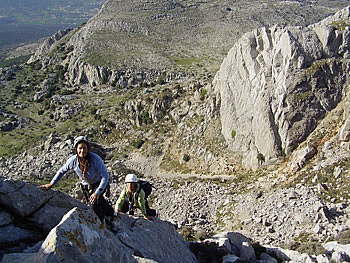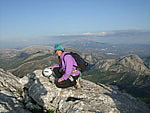
Activities in Andalucia
Antequera
The Antequera Lobo Park (Wolf Park) is a great attraction. There are four large enclosures of Iberian wolves, European wolves, Timber wolves and the very rare white Alaska - Tundra Polar wolf. The Park covers an area of 40 hectares, and is protected with many rare plants and animal species. There are noble Andalucian horses available for riding and also a petting zoo with different animals for children.
Fuente de Piedra (approx 15km from Antequera) is one of the largest salt water lagoons in Spain and it becomes home to 1000's of migrating flamingos during early Spring. The area however, is protected, so although you can walk and drive around the lagoon, you can't get to close There is a Visitors Centre that has a clear view to the lake and gives information about the 100's of different bird species that can be found in the area.
Hojiblanca is one of the oldest Olive Oil producing companies in Spain and their headquarters are on the outskirts of Antequera, where they have recently finished building their own museum dedicated to the heritage of olive oil production.It has many artifacts including an impressive 17th century beam press and plots production history using scale models of implements and presses. Produce is available to sample and buy too. ·
El Torcal Park Nature Reserve has 17 square km of some of the most beautiful and impressive limestone landscapes in Europe. It is a popular venue for walkers and climbers which is located on the outskirts of Antequera near the village of Villanueva de la Concepción.
The whole area was under sea until one hundred million years ago, then violent movements in the Earth's crust forced it upward to form hills and mountains up to 1.300 m high. The limestone had a layered horizontal formation that over millions of years has been eroded by the rain and wind to form incredible shapes.
There are three routes through the park for walkers which have been marked out with different coloured arrows on wooden sticks. The green route is the shortest and easiest, 1,5 km. and takes about 30 minutes. The yellow route covers most of the green area, is 2,5 km. long and takes you to "Las Ventanillas" The Windows, at 1.200 m. for panoramic views of the valley of Málaga. Finally the red route is the longest and most difficult, 4,5 km. taking about three hours, with a viewing point 1.339 m. up where you can see the whole of the El Torcal Park and, on a clear day, the Africa Coastline. The park now also has two Via Ferrata routes.
Malaga
Malaga and the coast has been spoilt by the extensive building work that has been carried out over the last 30 years, but the old city is still lovely and seems many miles away from its brash suburbs.
The Picasso Museum in Malaga is located in Buenavista Palace, a building representative of Renaissance civil architecture in Andalucia . The permanent exhibition comprises a selection of pieces from the private collections of two relatives, Christine Ruiz-Picasso and Bernard Ruiz-Picasso. The 155 works that go to make up the collection cover the different styles, materials and techniques used by the brilliant artist. There are also temporary exhibitions, as well as educational and cultural activities, held on Picasso-related topics.
The cathedral of the Encarnación is one of the town's most important monuments. It is situated in the historic centre of the town and the building sits where a mosque-Moorish quarter once existed. It has its own gardens and a magnificent courtyard.
Nerja
The Nerja caves, which are located just three kilometres from the centre of town, contain a natural archaeological cave containing the world's widest column.
Wall paintings found inside the caves date from the Palaeolithic and post-Palaeolithic periods while skeletal remains and artefacts show that they were inhabited from about 25,000 BC up until the Bronze Age.
These fantastic caves have been sympathetically transformed into a natural theatre where several concerts and ballets are staged during the summer.
Granada
The city of Granada was a centre of Moorish influence in Spain for several centuries and this is typified by the famous Alhambra; a massive complex of 14th and 15th century Moorish palaces and gardens set on a hilltop overlooking the rest of the city. An attraction that for once does justify the hyperbole. It is also worth wandering the cobbled streets of the old Moorish quarter to get a feel for the authentic culture.
The city sits at the base of the Sierra Nevada mountains and this spectacular backdrop is well worth exploring - the Cahorros Valley on the outskirts of the city near Huetor Vega offers fantastic walking along steep canyons.
Granada blends cultural and outdoor activities perfectly
.


